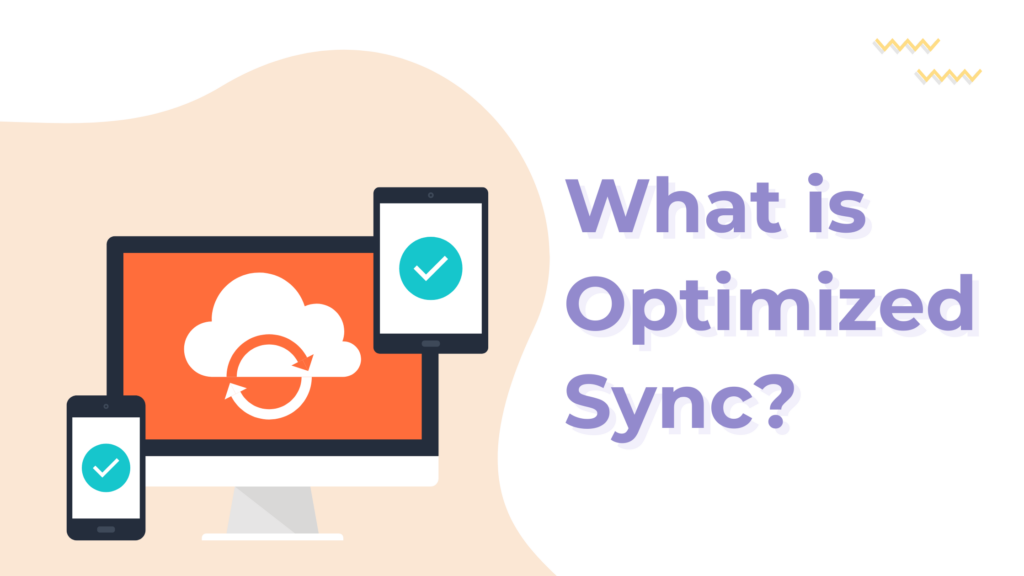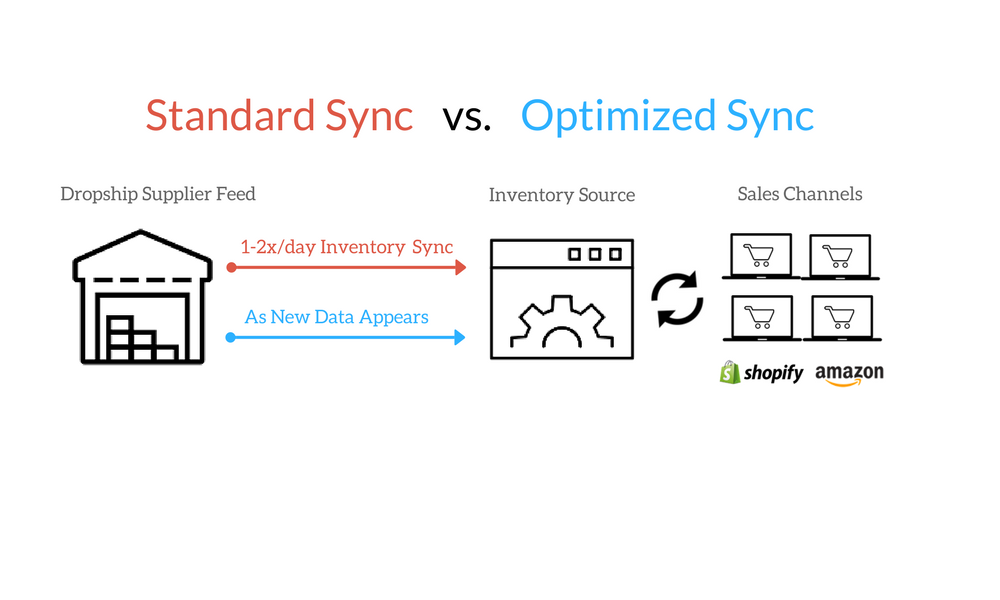What is “Optimized Sync”?
What is Optimized Sync?
Optimized sync, also known as optimized synchronization, refers to the process of efficiently updating and aligning data across multiple systems or platforms. This synchronization method focuses on maximizing speed and accuracy while minimizing resources and bandwidth usage. Optimized sync utilizes advanced algorithms and technologies to streamline the synchronization process, allowing businesses to maintain accurate and up-to-date inventory data in real time. By optimizing the sync process, businesses can prevent stockouts, avoid overselling, and provide a seamless shopping experience for customers.
Optimized sync differs from traditional synchronization methods in several key ways. While traditional methods may rely on manual data entry or periodic batch updates, optimized sync utilizes automated processes and real-time data synchronization. This means that changes to product inventory, such as additions, updates, or deletions, are reflected across all channels instantaneously.
Optimized sync employs advanced algorithms and technologies to optimize data transmission and minimize resource usage, resulting in faster and more efficient synchronization. Compared to traditional methods, optimized sync offers greater accuracy, speed, and reliability, making it ideal for ecommerce businesses that require seamless inventory management across multiple platforms.
What are The Benefits of Using Optimized Sync in Various Applications
Efficiency in Inventory Synchronization
Optimized sync ensures that inventory data is updated in real-time across multiple platforms and systems, reducing the likelihood of overselling or stockouts. This efficiency streamlines inventory management processes and minimizes the need for manual data entry or reconciliation.
Improved Productivity with Inventory Sync
By automating inventory synchronization tasks, businesses can free up valuable time and resources that can be allocated to other critical aspects of operations. This leads to increased productivity and allows staff to focus on tasks that require human intervention and decision-making.
Enhanced Accuracy in Product Inventory Synchronization
Optimized sync solutions maintain accurate and consistent product inventory data across all channels and platforms, reducing errors and discrepancies. This accuracy enhances customer satisfaction by ensuring that shoppers have access to up-to-date information on product availability and delivery times.
Streamlined Stock Sync for Ecommerce
For ecommerce businesses, optimized sync facilitates seamless stock synchronization between online storefronts, marketplaces, and backend inventory systems. This streamlining of stock sync processes helps ecommerce retailers avoid overselling, prevent order cancellations, and maintain a positive reputation with customers.
Cost Savings through Efficient Inventory Management
Optimized sync reduces the likelihood of costly errors and inefficiencies associated with manual inventory management processes. By minimizing stock discrepancies and improving inventory accuracy, businesses can avoid unnecessary expenses related to stockouts, overstocking, and order fulfillment errors.
How Optimized Sync Works?
The following are the steps explaining the working of Optimized Sync:
Inventory Synchronization Process
Optimized sync involves the process of synchronizing product inventory across multiple platforms or systems. It ensures that product information, such as stock levels, prices, and descriptions, remains consistent and up-to-date across all channels. Inventory sync is achieved through automated processes and data integration between ecommerce platforms, inventory management systems, and other relevant software.
Automated Data Exchange
With optimized sync, changes made to product inventory in one system are automatically reflected in others, minimizing the need for manual updates. For example, when a product is sold on an ecommerce website, the stock level is automatically adjusted across all connected platforms through inventory sync. This automated data exchange streamlines operations and reduces the risk of errors or discrepancies in product information.
Real-Time Updates
Optimized sync ensures that inventory information is updated in real-time, providing accurate and timely data to both businesses and customers. Product inventory synchronization enables businesses to maintain optimal stock levels and avoid overselling or stockouts. Real-time stock sync also enhances the shopping experience for customers by providing accurate availability information for products.
Efficient Order Fulfillment
By synchronizing product inventory data, businesses can efficiently manage order fulfillment processes. Inventory sync allows businesses to track stock levels accurately and fulfill orders promptly, improving customer satisfaction and retention. Optimized sync for ecommerce helps streamline operations and optimize inventory management, leading to increased efficiency and profitability.
Optimized Sync vs. Traditional Sync
This table provides a comparison of features between Optimized Sync and Traditional Sync, highlighting the differences in method, efficiency, real-time updates, data accuracy, resource usage, scalability, complexity, customization options, cost, and maintenance.
| Features | Optimized Sync | Traditional Sync |
| Method | Uses advanced algorithms and technology | Relies on manual or basic synchronization |
| Efficiency | Offers faster and more efficient syncing | May be slower and less efficient |
| Real-time Updates | Provides real-time updates | Updates may not be immediate |
| Data Accuracy | Ensures accurate and consistent data | Data may be prone to errors or discrepancies |
| Resource Usage | Optimizes resource usage | May consume more resources |
| Scalability | Easily scalable to handle large volumes of data | May have limitations on scalability |
| Complexity | More complex setup and configuration | Simpler setup and configuration |
| Customization Options | Offers more customization options | Limited customization capabilities |
| Cost | May require investment in advanced technology | May be more cost-effective initially |
| Maintenance | Requires ongoing maintenance and updates | May require less frequent maintenance |
Conclusion and Announcement
Inventory Source is proud to announce the arrival of “Optimized Sync”. Currently, most of our customers have a sync schedule of 1-2 times per day. With the introduction of our Optimized Sync plan, we now have the technology to pull your inventory feeds as often as new data is made available by your supplier. This will ensure your online store or ecommerce platform has the most accurate and optimized data made available by your supplier. Let’s understand the concept of Optimized Sync.
Those on our optimized sync plans have their inventory feed monitoring and updating schedules set to pull new data as often as it appears in the new supplier feed, to then be pushed as soon as possible to your store. Obviously how often the data is updated is dictated by how often the supplier updates their feed with new data, however with optimized sync you can be sure you are pulling this data as often as possible. Data accuracy is key in dropship ecommerce and with this new service we hope to aim to reduce stock outs, help rapidly adjust for changing costs, and quickly add new products, ultimately allowing you run your business smoother and gain a leg up on your competition.
Optimized Sync is included in the Inventory Automation Premium Plan and all Full Automation Plans. It can also be added to the Inventory Automation Standard Plans for $25/month per integration. Feel free to contact us to add it today.
Optimized Sync is included in the Inventory Automation Premium Plan and all Full Automation Plans. It can also be added to the Inventory Automation Standard Plans for $25/month per integration. Feel free to contact us to add it today.




